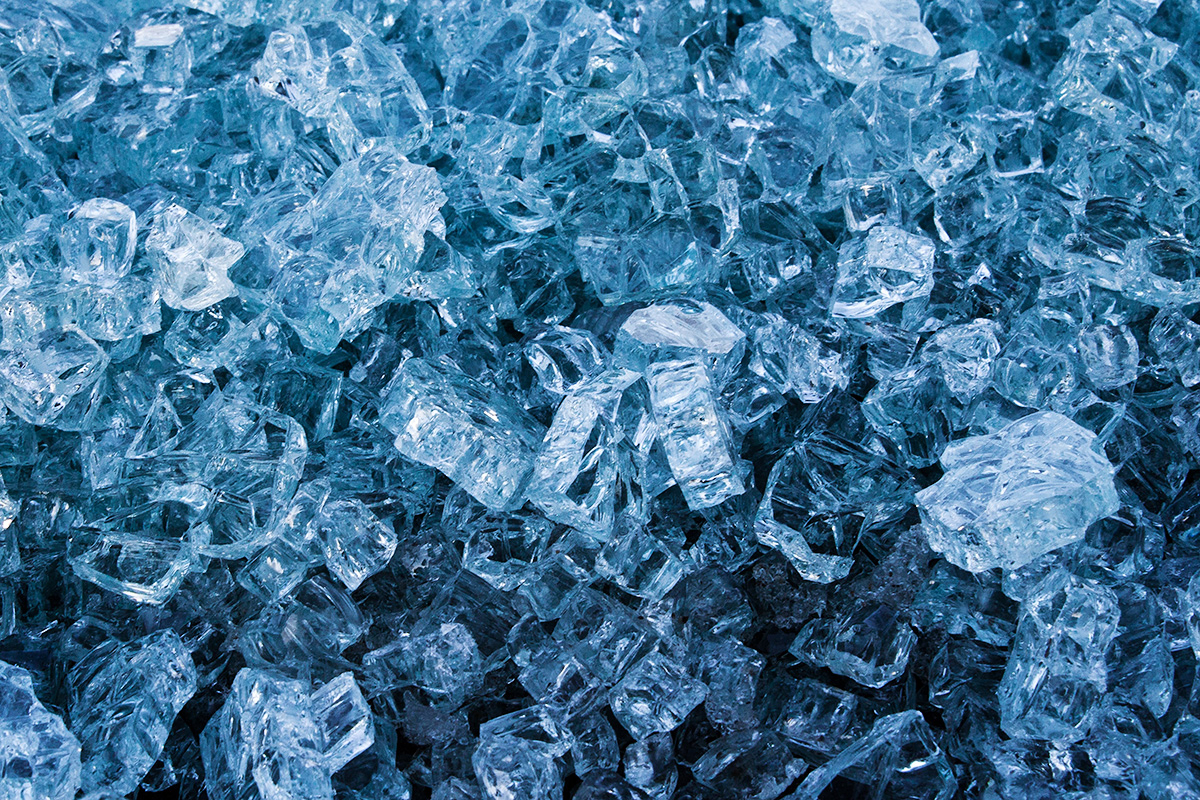Ice bath or also called cold water immersion is a method used by professional athletes to recover faster after intense exercises, extinguish muscle soreness, and help their bodies to bounce back for their next training session. But this is only one of many great benefits, amongst them reduced inflammation, increased mental strength, and higher metabolic rates.
Taking an ice bath sounds painful, and when doing it unprepared for the first time, it sucks. But it can be trained and the benefits are fantastic. Once you get used to it, it becomes almost pleasant.
My first attempt without any preparation felt like a total failure. Within seconds I was shaking miserably with my upper body not even submerged. After two minutes, I had to get out. That experience would have scared me away if it hadn’t a noticeable effect afterward. I felt fresh and had significantly less muscle soreness the next day than I would usually have after a comparable training session.
From that day, I incorporated ice bathing in my training regime but began slowly. I used it extensively during the weeks before Ninja Warrior, as it made me mentally stronger and helped me to increase my workout intensity and avoid sore muscles at the same time.
So, if you want to reap those benefits too, read on and you will soon be ready to take your first real ice bath.


So, how can ice baths speed up muscle recovery?
When exposing your body to the coldness of ice baths, blood vessels restrict and metabolic activity decreases. That reduces swelling and tissue breakdown.
Once your body is no longer in contact with the cold water, your tissue warms up and blood flow increases. That flushes out harmful metabolic waste products, which your body has generated throughout the training. Furthermore, your lymphatic system gets activated and speeds up the clearance of toxins throughout your body. Hence, the healing process is jump-started and muscle soreness is reduced.
That effect is comparable with compression tack and flossing but is applied to your whole body at once.
Further ice bath benefits
Besides enhanced recovery[1,2], why deliberately exposing yourself to “freezing” temperatures?
Well, taking ice baths comes with further health benefits such as:
- Increased metabolic rate
- Higher energy levels
- Reduced inflammation
- Increased dopamine and norepinephrine levels
- Enhanced immune function
- Increased focus, confidence, and mental strength
The effect is the following:
Cold exposure is a natural stressor, that delivers a net positive effect on your body. As an attempt to keep you warm, your heart rate and respiration increase, which enhances blood flow and oxygen delivery. At the same time, norepinephrine floods your brain, reducing inflammation and pain, and boosting your focus and mood. This is also called endorphin rush and the reason for the rewarding feeling and the great mood, as seen in the video below.
Weight loss and higher energy levels
Taking an ice bath can also support weight loss in two different ways:
The first one is the overall metabolic boost for some time afterward. The second one is that cold exposure can convert white fat into brown fat cells. White fat is the standard fat in an adult’s body. It stores energy in big, oily droplets. Brown fat, on the contrary, contains smaller droplets and high amounts of mitochondria, your body’s natural power plants. Those mitochondria use the fatty droplets to produce energy and to generate heat without shivering.
This means that ice baths help your body to burn white fat cells and lead to an overall increase of mitochondria, meaning heightened energy levels within your body.[3]
Please keep in mind, that research on human subjects is rare and some mechanisms behind above mentioned effects are also not understood. That’s why cold exposure therapy is still controversial. So, I recommend making your own experience.
How to take an ice bath at home

The key to success is starting small. Even Wim Hof, who is the leading popularizer of cold exposure therapy and has made himself popular by running marathons at -22 degrees Fahrenheit (-30°C) in his underwear, did it once that way.
Taking a full ice bath can be painful if you are not used to it. Here is how you can prepare your mind and body and make ice bathing a pleasant experience within a few weeks without the miserable experience I had to make:
Start with small doses of coldness in your shower. Begin by switching the water to the coldest setting possible after your normal shower and try to stay in for another minute. It will suck in the beginning, but it will get better over time.
Once that is tolerable, fill your tub with the coldest tap water possible. Then get in and stay there for one to two minutes, at first. Increase that duration over time. Within a few weeks, you are able to bath in cold tap water for over 10 minutes without shaking or feeling too cold.
Depending on where you live, your tap water might already reach 55 and 60 degrees Fahrenheit (12-15°C), which is the recommended temperature for an ice bath. If that’s the case, start with slightly warmer tap water.
Then it’s time for a real ice bath:
- Purchase some bags of ice from your local grocery store or petrol station or make your own ice in the freezer, if you have one.
- Fill your tub with cold water and add ice on top until you have a temperature between 54 and 60 degrees Fahrenheit (12-15°C).
- Sit in the ice bath for a maximum of up to 10 minutes and blame me for doing that stuff. Try to stay calm and breathe deep and slowly. Your first natural response will be taking shallow, fast breaths. But the opposite is what you need to do. Deep inhales will deliver more oxygen into your body and help to relax.
- Get out of the cold water and resist the urge to take a hot shower. Use a towel to dry your body and let it warm up slowly. Warm tea or coffee will do well.
Just a few tips for getting started:
Some people like to add the ice gradually after they got into the cold water. That way, it’s less of a shock. Also, put on some swimming trunks or shorts to protect sensitive areas.
Want to Do More Pull-Ups?
Just join the newsletter below and get instant access to my quick guide to boosting your pull-up performance.
When is the best time to take an ice bath
The answer to the best time for an ice bath is highly controversial. Some athletes say “directly after every training”. In my opinion, this is a waster of water and money and counteracts your body’s training stimulus very likely, and, thus, reduces your gains.[4]
Use ice baths only after really intense training sessions, when you feel beaten up and your training quality is starting to suffer, and shortly before a competition to stay fresh and energized.
Also, wait a few hours after your training. Immediate cold water immersion appears to be counterproductive, as it reduces your body’s adaptive response to your workout. So, let your body naturally repair exercise-induced damage for a couple of hours before taking an ice bath. Right before bed or first thing in the morning may be the best time for you.
The proper ice bath duration
5-10 minutes for an ice bath are absolutely enough to get its benefits. Even 2 minutes will have some effect. So, keep it short in the beginning and let your body adjust to the cold. Once your body handles that better, you can aim for more.

Further questions about taking an ice bath
Are ice baths dangerous?
Some people might worry about frostbite and hypothermia when hearing of ice baths. Both are unlikely, as long as you respect the following:
Do not take ice baths, that are below 54 degrees Fahrenheit (12°C) to prevent frostbite and don’t stay in there longer than 15 minutes to avoid hypothermia. That way, everything should be fine.
Still, everyone reacts differently. So listen to your body and get out of the cold water, if you become too cold. Don’t stay in the bath until it becomes painful or unbearable! Besides that, it is always good to have someone watching you, if you feel insecure.
Is an ice bath without ice and only cold tap water still beneficial?
Depending on where you live, your coldest tap water might already reach 54 and 60 degrees Fahrenheit (12-15°C) and you can skip the additional ice and save some money. So, check the temperature first before buying some ice.
Summary
Ice baths are a fantastic tool for athletes who want to speed up their recovery after intense exercises and improve their mood, focus, and mental strength by challenging the perceived limits of their body and mind. If peak performance and happiness are your thing, you should give it a try.
Surely, it’s not for everyone as it’s quite unpleasant at the beginning and when done wrong even harmful. So my personal recommendation is to start slow with just cold tap water, experiment with it, try it for a few times, see how your body reacts, and do it within healthy limits.
Eventually, you will become as enthusiastic about cold exposure therapy as me, once you get accustomed to the cold and have experienced its benefits and the rewarding feeling afterward .
And if you want to know more about cold exposure therapy, I recommend you the audiobook The Way of the Iceman: How the Wim Hof Method Creates Radiant, Longterm Health from Audible. There you can also learn some really interesting breathing technique.
Now it’s your turn. Are you ready? I can’t wait to read your experiences in the comments below.
[1] Cold-water immersion (cryotherapy) for preventing and treating muscle soreness after exercise.
[2] Cooling and performance recovery of trained athletes: a meta-analytical review.
[3] Function Brown Adipose Tissue in Healthy Adults.
[4] Cryotherapy: Are we freezing the benefits of exercise?
[5] Recovery From Exercise-Induced Muscle Damage: Cold Water Immersion Versus Whole Body Cryotherapy.
[6] Recovery following a marathon: a comparison of cold water immersion, whole body cryotherapy and a placebo control.